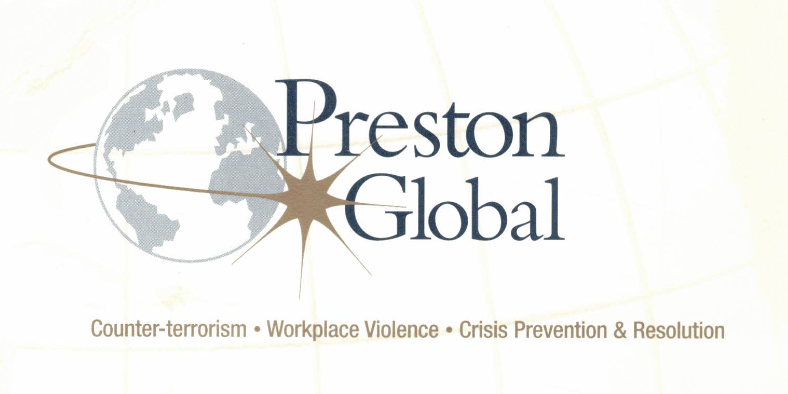Q. We just heard a report on workplace violence at one of our subsidiaries. Someone then talked about his researching WPV. He was stunned by all the weird kinds of attacks being used. He said one woman hated a co-worker so she’d arrive early every day to spray foul odors on the co-worker’s seat cushion. Then she’d slip off without being seen and go back at the regular time. Another was when two men were competing for the same promotion. Tension was scary. One guy started getting gobs of literature in regular mail ranging from offers for sex items to marriage proposals, and all kinds of requests for contributions to really embarrassing causes. An investigation found enough evidence against the other man to have him fired for emotional abuse. So what’s your firm’s oddest WPV case?
A. We were retained to solve a bizarre case involving the disappearance and illegal activities of someone whose professional career had been faultless. One day he asked the CEO for five days off to relax, tour, and sight-see. “Of course, you’ve earned it,” came the reply. That began a series of idiosyncratic exploits.
Shortly after arriving in a northeastern state, the increasingly irrational problem-maker, checked into a motel. An hour later he phoned police, claiming to have witnessed a nearby murder (untrue). That same evening, using various tools, he noisily tried “renovating” his motel bedroom and bath. Management evicted him. Vanishing temporarily, he soon began making disturbing phone calls to his boss. Exactly at 2 a.m. every 24 hours he would awaken the CEO, and in a sinister whisper say “BINGO.” And disconnect.
After several sleep interruptions, the CEO sought our services. We were able to identify the intruder.
Moving rapidly, we thoroughly researched the individual’s background, work history, while judiciously interviewing various sources who knew him well. Concurrent tasks included improving facility as well as CEO home security, and helping restore normal operations within a restless C-Suite — excessive focus on this episode, interrupting essential business. Two favorable breaks occurred simultaneously.
Using information gathered during our first week on the job and forwarded to various police agencies, law enforcement spotted the missing employee’s vehicle traveling through a state contiguous to the one where he began causing trouble. They nabbed him. Shortly after processing and jailing, officials transferred their suspect to a mental unit. However, he escaped. Still, one element in his adult life intrigued us. He held a licensed medically-related degree and job. Might his sudden, abnormal behavior result from self-overdosing because of unknown psychosomatic issues? We found no intimations of his seeing a mental health specialist. Perhaps agreement should be given by our client and law enforcement to locate and, if possible, have him return or returned without criminal charges — unless future actions dictated otherwise.
Meanwhile, learning that his girlfriend had taken a couple of phone calls from the elusive traveler, we sought her assistance. She cautiously began encouraging him to come home. He lived on a houseboat. We set up round-the-clock personal and photographic observation of the immediate area. Eventually, he slipped onto his boat one dark, stormy night. Tracking his every move expanded. Suspicious late evening ventures took him onto both the corporate property and that of the CEO’s. Security tightened.
Here is where experience turns out to be either invaluable or wobbly. All indicators pointed to a possible, but not yet probable, daunting event at either or both locations. We believed the worst could be prevented. Instant intervention was available. Continuing 24-hour discreet shadowing also provided local police with relevant information before apprehension. [Many other details elevated this amazing case, which we reveal in seminars. I hope you will understand the difficulties encountered as well as how almost each day, turned into dissimilar off-the-wall antics.]
In essence, both CEO and institution were in crisis. Violence (we were able to covertly confiscate his only gun), false rumors leading to expected media frenzy (less than anticipated) and property damage (electronic and other surveillance worked well) remained highest priority. Employee concerns, organizational reputation, and mental health intervention for this person also rated high collectively. Morale soared.
Best of all, once critical matters subsided, Mr. Menace settled contentedly in a secure, private mental facility. The CEO’s kind decision plus board generosity proved invaluable. This unfortunate psychotic received outstanding treatment and after-release care. Each, with lifetime meds, relieved delusions as he regained normal senses of reality. Despite havoc and stresses created, all medical costs, doctors, hospital, and follow-up care, and early retirement pay plus full benefits were picked up by the victim organization where he once toiled . . . where he beleaguered until Christmas Eve of the year this event occurred.
Two final lessons: First, crisis prevention always should be leadership’s first line of defense. Yet, as in this matter, certain type incidents cannot be predicted. Second, positive and highly beneficial crisis/public relations outcomes from proficient and highly experienced specialists unquestionably are cost-effective.

